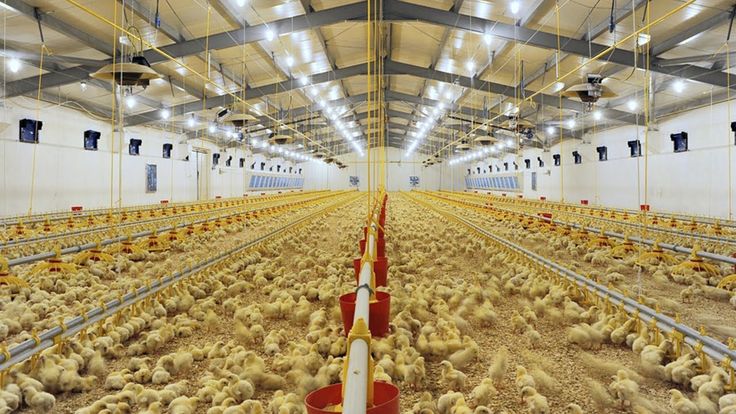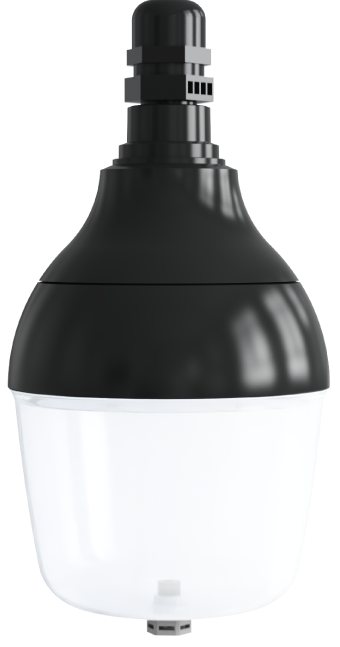Poultry House Light Specifications for Yellow-feathered Chicken
Technical specification for lighting in intensive yellow-feathered chicken house
T/CAAA 090—2022

Directory:
1. Scope
2. Normative References
3. Terms and Definitions
4. Technical Requirements
5. Illumination Environment Assessment
6. System Maintenance
7. Appendix
1. Scope
This document outlines the technical lighting requirements, detection of lighting environments, and maintenance of lighting systems for large-scale breeding of various types of yellow-feathered broiler breeders and commercial chickens.
This document is relevant to large-scale breeding farms that raise different types of yellow-feathered broiler breeders and commercial chickens.
2. Normative References
The following documents are referenced as essential terms within this document. For references with specific dates, only the version corresponding to that date is applicable; for those without dates, the most recent version (including all amendments) is applicable.
GB/T 5700 Lighting measurement method
3. Terms and Definitions
The terms and definitions from GB/T 5700. along with the following, are applicable to this document.
3.1 Yellow-feathered Broilers
Broilers characterized by yellow feathers. Broadly, this category also includes local breed chickens and various strains and varieties of yellow, hemp, yellow jute, red, brown, black, silky, and white-feathered chickens developed from local breeds.
3.2 Yellow-feathered Broiler Breeders
These are used to produce pure lines, grandparents, and parents of yellow-feathered broilers.
3.3 Fast-speed Yellow-feathered Broilers
Yellow-feathered broilers that are sold before reaching 65 days of age.
3.4 Medium-speed Yellow-feathered Broilers
Yellow-feathered broilers that are sold between 65 and 95 days of age.
3.5 Slow-speed Yellow-feathered Broilers
Yellow-feathered broilers that are sold after 95 days of age.
4. Technical Requirements
4.1 Lamps
4.1.1 Lamps must be shockproof, dustproof, and waterproof, suitable for high-temperature, humid, and corrosive environments.
4.1.2 LED lamps are recommended.
4.2 Lighting Control
4.2.1 Automatic lighting control systems and light intensity regulators must be installed.
4.2.2 Non-enclosed chicken houses should implement shading and supplementary lighting measures to comply with the established lighting program.
4.3 Chicken House Lamp Layout
4.3.1 The layout of lamps in the chicken house should be designed based on the area of the house, type of chicken cages, lamp power, and the required illumination for the chickens.
4.3.2 In multi-layer cage chicken houses, it is advisable to arrange two adjacent rows of lighting lamps in a crosswise manner, with lamps in the same row positioned alternately high and low. The illumination between layers should be uniform, and the distance between lamps should not exceed 8.2 feet, adjustable according to the height of the cage layers.
4.4 Lighting Parameters
4.4.1 Color Temperature
4.4.1.1 For breeder chickens from birth to 14 weeks, a cooler color spectrum is recommended, while a warmer color spectrum should be used for those older than 14 weeks.
4.4.1.2 For broilers from birth to 7 weeks, a cooler color spectrum is advised, and a warmer spectrum should be used for those over 7 weeks.
4.4.2 Illumination
4.4.2.1 Ensure consistent illumination throughout the chicken house, with the uniformity between layers and lamps not falling below 0.80.
4.4.2.2 If natural light is inadequate in non-enclosed chicken houses, artificial lighting can be utilized to enhance illumination.
4.4.2.3 Refer to Appendix A for breeder chickens and Appendix B for commercial broilers.
4.4.3 Duration of Illumination
Refer to Appendix A for breeder chickens and Appendix B for commercial broilers.
5. Illumination Environment Assessment
5.1 Equipment
The illuminance meter must comply with GB/T 5700 standards.
5.2 Assessment Procedure
5.2.1 Measurement Point Selection: Choose a height that corresponds to the feeding or main activity area, directly beneath the lamp and between two lamps. Measure the illumination at each layer of the stepped or stacked chicken cage, ensuring at least 10 measurement points.
5.2.2 Lamp Preheating: Prior to measurement, all lighting fixtures should be turned on and allowed to stabilize for over 30 minutes.
5.2.3 Illumination Measurement: Clean the light meter's receiver and position it horizontally at the measurement point. During measurement, avoid interference from artificial light or clothing reflections. Follow the meter's instructions to read the illumination value.
5.3 Measurement Value Calculation
5.3.1 Average Illumination: Calculate the illumination of the chicken house Eave using formula (1), with the unit expressed in lux (lx).
![]()
Where:
Ei represents the illuminance at the i-th measurement location, measured in lux (lx);
n denotes the total number of measurement locations.
The result of the calculation should be rounded to two decimal places.
5.3.2 Uniformity of Illuminance
Determine the illumination uniformity U of the chicken house using formula (2).
![]()
Where:
Emin - the lowest recorded illumination level, measured in lux (lx);
Eave - the average illumination level within the chicken house, measured in lux (lx). The result of the calculation should be rounded to two decimal places.
6. System Maintenance
6.1 The lighting control system must be inspected regularly to ensure that both the controller and wiring are functioning properly.
6.2 Lamps should be cleaned on a regular basis.
6.3 Any damaged lamps or those that do not meet the required illumination standards should be replaced promptly.
6.4 The lighting parameters for the chicken house should be adjusted according to the breeding cycle.
7. Appendix
Poultry Lighting Program: Yellow Feathered Broilers Lighting program
8. Related Product

9. People Also Ask
What are the light requirements for poultry?
Poultry lighting requires energy-efficient LED systems (50-60+ lm/W) with adjustable intensity (≥300 lux) and monochromatic wavelengths to optimize growth, reproduction, and welfare. Red light reduces aggression and accelerates sexual maturity, while green light enhances exploration. Uniform illumination with minimal glare and programmable dimming cycles supports natural behaviors and circadian rhythms. Sustainable designs prioritize durability in corrosive environments and compliance with energy regulations.
What is the best lighting for poultry?
The optimal poultry lighting utilizes energy-efficient LEDs (50-60+ lm/W) with monochromatic wavelengths: red reduces aggression and accelerates maturity, while green stimulates exploration. Adjustable intensity (≥300 lux) and programmable dimming cycles support circadian rhythms and natural behaviors. Sustainable LED systems ensure durability, compliance with energy standards, and uniform illumination with minimal glare for enhanced welfare.
What is the light spectrum for poultry?
The optimal light spectrum for poultry involves monochromatic wavelengths that influence behavior, growth, and welfare. Red light (640-660 nm) reduces aggression and accelerates sexual maturity, while green light (520-540 nm) enhances exploration and activity. Blue light (450-470 nm) regulates circadian rhythms and improves immune function and meat quality. Ultraviolet (UV) wavelengths, though absent in conventional LEDs, reduce stress and fear responses in laying hens when supplemented. LED systems enable precise spectral control, outperforming traditional bulbs in energy efficiency and adaptability, with red-dominant spectra (60% red light) enhancing ovarian activity and feed efficiency in layers. Adjustable intensity and programmable cycles further optimize productivity and welfare.
